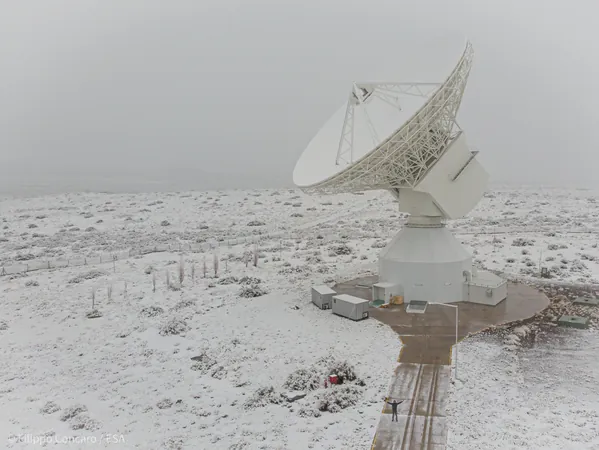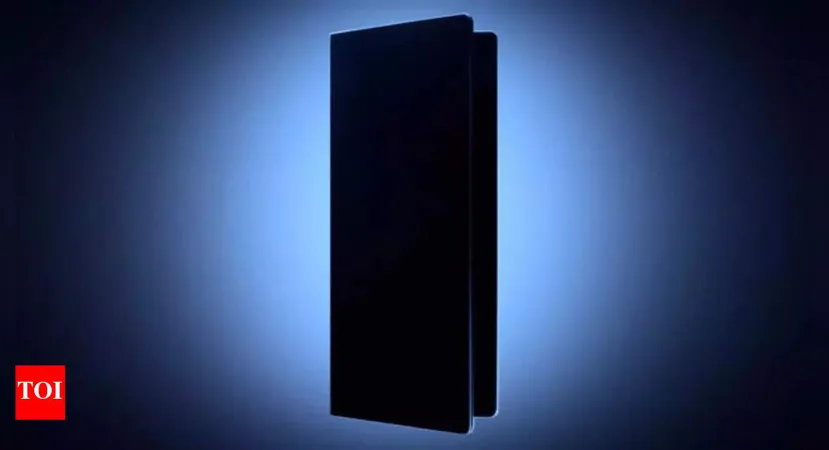
Major Upgrade at Malargüe Satellite Station: A Cryogenic Revolution Boosts Data Capacity by 80%!
2025-01-20
Author: Sophie
Introduction
In an exciting development for space communication, the Malargüe deep-space communication station in Argentina has successfully completed a groundbreaking upgrade that dramatically enhances its data transmission capabilities. This major overhaul, finalized in late July 2024, allows the station to send and receive nearly 80% more data, positioning it as a crucial player in the future of space exploration.
The Need for Upgraded Infrastructure
As the number of deep-space missions continues to rise, the need for robust communication infrastructure has never been greater. The European Space Agency (ESA) is responding to this increased demand by implementing extensive upgrades across its global ground station network, known as Estrack. One key aspect of these improvements is the introduction of innovative cryogenic technology, which promises to revolutionize how data is captured and transmitted from space.
Enhanced Data Handling Capabilities
With the successful implementation of these cryogenic systems at Malargüe, the antenna can now handle significantly more science data, providing critical support to advanced missions such as ESA's Juice, which is set to explore Jupiter's moons, and BepiColombo, tasked with investigating Mercury. These missions require immense data bandwidth to relay findings back to Earth, and the Malargüe station is ready to meet this soaring demand.
The Technology Behind the Upgrade
So, how does this cutting-edge technology work? Traditional antennas face challenges with background interference, or thermal noise, which can severely limit their performance. By cooling the link between the antenna and the electronic components to a chilling -263°C (10 Kelvin), a remarkable reduction in noise is achieved. This allows the station to boost its signal-to-noise ratio, enhancing sensitivity and data transfer rates substantially.
Expert Insights
Stéphane Halté, the ESA project manager overseeing the ground station upgrades, emphasized the importance of minimizing thermal noise. "By operating at cryogenic temperatures, we can achieve a significant increase in the antenna’s capacity, leading to enhanced capabilities for upcoming missions."
Collaboration and Innovation
The new cryogenic feeds utilize advanced ultra-low noise amplifiers developed in collaboration with prestigious academic institutions like ETH Zurich in Switzerland and Chalmers University in Sweden. These innovative amplifiers are not only enhancing communication with space missions but are also playing a vital role in the advancement of quantum computing technologies, illustrating how ESA’s innovations contribute to both scientific and commercial sectors.
Funding and Development
The funding for this groundbreaking project was provided through the ESA Technology Development Element program. The prototype was brought to life by Callisto Space (France), with operational units manufactured by the same company, while Canadian firm Calian handled the integration into ESA's deep space stations.
Implications for Future Upgrades
Importantly, Malargüe is not alone in this upgrade journey; it follows the successful enhancement of the Cerebros station in 2023. With the introduction of cryogenic technology becoming a standard across ESA ground stations, future installations, like the New Norcia 3 antenna, will also feature these advanced systems.
Conclusion
As the space race intensifies, upgrades like those at Malargüe are essential in maintaining cutting-edge capabilities, ensuring that scientists and researchers can continue to push the boundaries of our understanding of the universe. The future of space exploration is brighter than ever, thanks to these technological strides!









 Brasil (PT)
Brasil (PT)
 Canada (EN)
Canada (EN)
 Chile (ES)
Chile (ES)
 Česko (CS)
Česko (CS)
 대한민국 (KO)
대한민국 (KO)
 España (ES)
España (ES)
 France (FR)
France (FR)
 Hong Kong (EN)
Hong Kong (EN)
 Italia (IT)
Italia (IT)
 日本 (JA)
日本 (JA)
 Magyarország (HU)
Magyarország (HU)
 Norge (NO)
Norge (NO)
 Polska (PL)
Polska (PL)
 Schweiz (DE)
Schweiz (DE)
 Singapore (EN)
Singapore (EN)
 Sverige (SV)
Sverige (SV)
 Suomi (FI)
Suomi (FI)
 Türkiye (TR)
Türkiye (TR)
 الإمارات العربية المتحدة (AR)
الإمارات العربية المتحدة (AR)